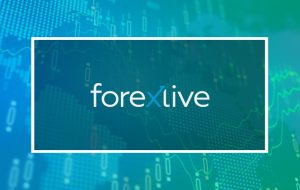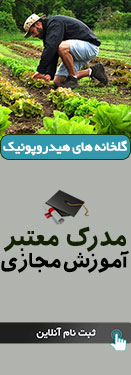Newsquawk week ahead: Blinken in China; U of Michigan; RBA, BOC minutes
MON: US Secretary of State Blinken to visit China (TBC), Australian Retail Sales (Q4), EZ Sentix Index (Feb), EZ Retail Sales (Dec), New Zealand National Day. TUE: RBA Announcement, US Trade Balance (Dec), Canadian Trade Balance (Dec), EIA STEO. WED: RBI Announcement, NBP Announcement, Banxico Announcement, BoC Minutes. THU: Riksbank Announcement, EU Leaders’ Summit on

- MON: US Secretary of State Blinken to visit China (TBC), Australian Retail
Sales (Q4), EZ Sentix Index (Feb), EZ Retail Sales (Dec), New Zealand National
Day. - TUE: RBA Announcement, US Trade Balance (Dec), Canadian Trade Balance (Dec),
EIA STEO. - WED: RBI Announcement, NBP Announcement, Banxico Announcement, BoC Minutes.
- THU: Riksbank Announcement, EU Leaders’ Summit on US Inflation Reduction
Act. - FRI: EU Leaders’ Summit on US Inflation Reduction Act, ECB TLTRO Publication
of Repayment Amount, Chinese Inflation (Jan), Canadian Jobs Report (Jan), UK
GDP (Dec), Norwegian CPI (Jan), US University of Michigan Survey (Feb), CBR
Announcement.
US Visit To China:
US Secretary of State Blinken is expected to head to Beijing this
weekend in a bid to stabilise ties between the two largest economies. Several
sources cited by the FT suggested Blinken may meet Chinese President Xi during
his two-day visit, which commences on Sunday. The talks will likely touch on
several themes, with the overarching issue being US-China decoupling. Recent
reports suggested that the US has convinced Japan and the Netherlands – among
the largest manufacturers of semiconductor manufacturing equipment – to join it
in expanding a ban on exports of chip-making technology to China. Beijing accused
the US of deliberately targeting Chinese companies. Geopolitics will likely be
another topic – namely on Taiwan. Chinese military exercises around Taiwan have
been a regular occurrence since the visit of former House Speaker Pelosi to the
island. More recently, the US secured new access to key bases in the
Philippines, which China said could increase tensions, particularly as the
Philipines and China disagree on territories in the South China Sea.
Furthermore, China expressed discontent over the AU/UK/US pact – the trilateral
security agreement between Australia, the UK, and US – which was announced in
September 2021. Under the pact, the US and UK will assist Australia in
acquiring nuclear-powered submarines. The Russia-Ukraine war will also likely
be discussed given China’s close ties with Russia – Russian Foreign Minister
Lavrov on Thursday said Russia’s relations with China are stronger than a
military alliance, there is no limit. All-in-all, it is unlikely that a
breakthrough will be reached at the confab, but the tone of commentary from
both sides will be watched, whilst a joint press conference could be received
as a positive.
Australia Retail Sales (Mon):
Retail sales in Q4 are expected to have contracted 0.6% from a 0.2% rise
in Q3. Desks suggest the main dynamic for the slowdown in Q3 vs Q1 and Q2 was
likely a function of a sharp rise in retail prices eroding purchasing power.
Furthermore, Australian Q4 CPI rose at a sharp pace – printing at 7.8% Y/Y
(exp. 7.5%; prev. 7.3%). Analysts at Westpac expect retail prices to have risen
around 1.2% Q/Q, and thus align their forecasts with the Street’s view of a
0.3% fall in retail sales volumes. “Note that wider measures of spending
suggest this weakness in retail has been largely offset by a surge in non-retail
spending, and services in particular”, the analysts say.
RBA Announcement (Tue):
The RBA is to conduct its first policy meeting of the year on Tuesday
when the central bank is likely to continue hiking rates with money markets
pricing an 85% chance of a 25bps rate increase to 3.35% and just a 15%
likelihood of a pause, although this was more balanced around two weeks ago
when markets were pricing near-even odds between a 25bps hike and keeping rates
unchanged. As a reminder, the RBA raised rates by 25bps at the last meeting in
December which was as expected and it reiterated that the Board expects to
increase interest rates further over the period ahead, but it is not on a
pre-set course with the size and the timing of interest rate increases to depend
on data and the assessment of the outlook for inflation and the labour market.
The central bank also noted that inflation is too high and that the Board’s
priority is to re-establish low inflation, as well as return inflation to the
2%–3% band target over time, while the options it considered at that meeting
were either a 50bps hike, a 25bps hike, or no change in the Cash Rate.
Furthermore, the RBA’s rhetoric was largely a reiteration and pointed to
additional rate hikes ahead to contain inflation which spurred some adjustments
to market forecasts as some had previously anticipated rates to peak at 3.10%.
The recent data releases have continued to support the likelihood of a hike as
inflation remained red hot for Q4 with CPI Y/Y at 7.8% vs. Exp. 7.5% (Prev.
7.3%) which was the highest since 1990 and boosted hawkish bets with markets
now heavily leaning towards a continuation of the rate hike cycle at the
upcoming meeting, although there is debate thereafter with Australia’s largest
bank CBA among those calling for a pause after this meeting, which goes against
the median view from a recent Reuters poll for rates to continue increasing to
3.60% before the RBA pauses for the rest of 2023.
RBI Announcement (Wed):
The RBI is expected to hike rates again when it concludes its 3-day
policy meeting next week, with 40 out of 52 economists surveyed by Reuters
forecasting the RBI to deliver a narrower rate hike increment of 25bps to lift
the Repurchase Rate to 6.50% compared with the 35bps rate increase it opted for
in December, while the remaining 12 economists are calling for a pause. The
rate increase at the last meeting was largely influenced by inflation which
Governor Das said remained high and broad-based, while he also noted that
further calibrated monetary policy action is warranted to anchor inflation
expectations and that a premature pause would be costly at this juncture.
Furthermore, the MPC will remain focused on the withdrawal of accommodation as
4 out of 6 voted in favour of retaining the current policy stance to ensure
that inflation remains within the target range going forward, while Committeee
member Goyal voted against the resolution and suggested it was time to move to
a neutral stance, and Varma also opposed the decision and was the sole
dissenter on rates as he believed the 35bps hike was not warranted.
Nonetheless, the inflation situation has improved since that meeting with CPI
data for both November and December back to within the RBI’s 2%-6% target range
in which the most recent of those printed 5.72% vs. Exp. 5.90% (Prev. 5.88%)
and tempers hawkish pressure on the central bank, while participants will also
be eyeing any clues of the RBI’s intentions going forward considering that the
median forecast from a Reuters survey is for the central to bank to pause for
the rest of the year following this anticipated hike.
BoC Minutes (Wed):
As a recap, The BoC hiked rates by 25bps to 4.50%. However, it gave an
explicit signal that it expects rates to be held at this level, providing the
economy develops broadly in line with its forecasts, though caveated that it
remained prepared to raise rates even further if it is necessary to bring
inflation back to target. The pause signal was a dovish surprise, with analysts
mostly expecting the central bank to maintain its prior guidance. The MPR saw
the Bank lower its 2022 and 2023 inflation forecasts, but 2024 inflation is
expected at 2.3% (prev. 2.2%), the same year it expects it to reach its target.
Growth forecasts were raised for 2022 and 2023, but lowered for 2024.
Meanwhile, the neutral rate estimate of 2-3% was left unchanged, and its output
gap estimate was revised higher to 0.5- 1.5% from 0.25-1.25%. At his
post-meeting press conference, Governor Macklem stressed that the pause was
conditional as the BoC takes time out to assess whether they have reached a
sufficiently restrictive level, and hinged on how the economy progresses.
Macklem also stressed that it is too early to be talking about rate cuts, and
when he was asked about the potential for an economic recession, said that
there could be a mild one, and added that the BoC expects growth to stall over
the next few quarters, but that was what is needed. In a later interview with
Reuters, Macklem said that if service price inflation was stickier than expected,
the BoC would likely need to raise rates further, and the biggest near-term
economic risk would be if a rapid reopening of the Chinese economy caused
global commodity and oil prices to rise.
Riksbank Announcement (Thu):
Expected to hike as guided in November, though desks are split as to
whether the move will be 25bp as the repo path from the last policy meeting
implied, or if a larger 50bp increase will be delivered given that CPIF
continues to increase and surpass the Riksbank’s November forecasts. A 25bp
hike can be justified by the view that much of the upside in headline inflation
is due to volatile electricity prices and the core (ex-energy) measure was only
marginally above target in December. As such, the Riksbank could argue that the
hot headline prints are not representative of the underlying inflation
backdrop, and thus stick with its guidance from November. Additionally, the
broader economy continues to deteriorate and Sweden is in a recession. On the
flip side, the main CPIF metric, while affected by electricity pricing, was
above target in November and significantly so in December at 12.3% (Riksbank
exp. 9.14%). This measure will undoubtedly be used as justification by some on
the Board for hawkish action; a stance perhaps prefaced by Breman’s recent
remarks that inflation is far too high and does not appear to have peaked yet.
Additionally, the ECB’s 50bp hike alongside hawkish market pricing for the
Riksbank adds credence to the argument for a larger tightening increment.
Looking further ahead, prior guidance was for the interest rate to peak at
2.84% and then remain at this level, but the terminal rate looks all but
certain to be lifted irrespective of the hike magnitude implemented at this
gathering, with the Riksbank’s assessment of CPIF/CPIF-XE likely to have the
final say.
Banxico Announcement (Thu):
The Mexican central bank’s January poll of private sector analysts shows
expectations for benchmark interest rates to end this year at 10.50% (vs 10.25%
in the December survey). Analysts also revised up their view of Mexican
inflation, seeing headline CPI at 5.8% in 2023 (vs 5.10% previously), and the
core rate of inflation at 5.20% this year (prev. 5.07%). Oxford Economics
expects the Banxico to defy consensus expectations with a swifter normalisation
cycle. “Our Taylor rule calculation supports our forecast of 175bps in rate
cuts during the second half of 2023, taking the policy rate to 9.00%,” the
consultancy writes, and sees the central bank ending its tightening cycle in
February with a 25bps hike to 10.75%, in line with forward guidance provided at
the last meeting. “However, the unexpected strength of the peso and the market’s
recent repricing of a lower terminal rate and earlier rate cuts in the US
should provide room for Banxico to start cutting rates from September onwards.”
OxEco says the Banxico’s decoupling from the Federal Reserve will likely cap
the rise of the MXN, although it says that the likely “downturn in the US and a
less attractive carry-trade return should prevent the currency from repeating
its stellar performance last year”; it sees USD/MXN at 20.5 by the end of this
year.
EU Meeting On US IRA (Fri):
A Special European Council meeting is slated for the 9th and 10th of
February. The European Union is concerned that Washington’s Inflation Reduction
Act (IRA) will pose problems for international competition and trade rules. The
IRA creates a USD 370bln package of subsidies and tax credits to develop an
ecosystem of advanced technologies. As a result, the European Commission announced
a USD 270bln “Green Deal Industrial Plan” in what some are calling a “global
subsidy race”. Several European heads suggested they do not want to start a
subsidy race with the US. Participants may be on the lookout for a new EU
financing instrument to fund the package, although this may not gain much
traction as Germany is publicly opposed to a new fund, while the Commission
already suggested it will facilitate the use of existing EU funds for financing
cleantech innovation, manufacturing and deployment.
China Inflation (Fri):
Chinese CPI is expected to remain at 1.8% Y/Y for January, while the PPI
metrics have no expectations (prev. -0.7%). Analysts at ING expect a faster
pace of CPI increase, around 2.4% Y/Y, given the COVID-related reopening alongside
the extended holiday from the Lunar New Year. PPI is expected to contract amid
lower commodity prices and higher base effects. The desk believes CPI will slow
in February after the holiday effect, whilst PPI will be supported after
construction activity recovers after the winter period. Using the latest Caixin
PMI data as a proxy for the month, the release suggests “Average input costs
meanwhile increased at the quickest pace for six months, though prices charged
were broadly stable.” Meanwhile, on Thursday, China’s MOFCOM warned that the
nation’s imports and exports face an extremely severe environment of slowing
external demand.
UK GDP (Fri):
Expectations are for M/M GDP for December to show a contraction of 0.1%
vs. the 0.1% expansion in November, and with the Q/Q rate for Q4 pencilled in
at 0%. The prior report saw an above-consensus +0.1% vs. Exp. contraction of
0.2% with the headline supported by the services sector on account of the Men’s
Football World Cup. This time around, analysts at Investec flag risks for the
upcoming report on account of industrial action in December which acted as a
drag on the services sector, whilst retail sales volumes fell 1% in December.
On a more positive footing, Investec judges that industrial production likely
grew by 0.7%, but when measured against a modest contraction in the
construction sector and unchanged agricultural output, their overall call is
for a 0.1% M/M contraction. From a policy perspective, it’s unclear how much of
a sway the upcoming release will have on the immediate outlook with the chance
of a further 25bps hike in March priced at just 60%. A positive outturn will
likely be welcomed by the MPC, however, given comments from Governor Bailey at
the February press conference, that the MPC needs to be absolutely sure “we are
turning the corner on inflation”, it is likely that markets will continue to
place greater weight on the inflation landscape, as opposed to the growth
picture in the UK.
CBR Announcement (Fri): All 13 analysts surveyed by Reuters expect Russia’s
central bank will maintain its key rate at 7.50%, as it continues its efforts
to bring inflation back to its 4% target. The survey suggests that the
inflation goal will not be met this year, with analysts predicting it will end
2023 at 5.8%. The analysts surveyed also see the Russian economy contracting by
around 2% this year, in contrast to the IMG’s recent projections, which
estimates above zero growth in 2023. Looking ahead, analysts see scope for the
CBR to lower rates, with the key rate seen at 7.13% by the end of the year
(range 6.50-8.00%).
US University of Michigan Sentiment (Fri): The University of
Michigan’s preliminary look at US consumer confidence in February is expected
to register a trivial rise to 65.0 from the 64.9 in January. Credit Suisse
looks for a higher-than-consensus 65.5, noting that “sentiment has rebounded
significantly from a deep trough last summer – but the level remains depressed,
even compared to past recessions. An outperforming stock market and better news
on inflation should continue to drive modest improvement.” Several gauges of
inflation have been showing a cooling in price pressures recently, and CS sees
the one-year (previously at 3.9%) and the 5-10yr (previously at 2.9%) will be
little changed, staying in recent ranges; “realised inflation appears to have
peaked, but we expect the Fed to remain vigilant of any signs that expectations
are drifting higher,” CS writes.
For more research like this check out Newsquawk’s live
squawk box for 7 days free
| آموزش مجازی مدیریت عالی حرفه ای کسب و کار Post DBA + مدرک معتبر قابل ترجمه رسمی با مهر دادگستری و وزارت امور خارجه |  آموزش مجازی مدیریت عالی و حرفه ای کسب و کار DBA آموزش مجازی مدیریت عالی و حرفه ای کسب و کار DBA+ مدرک معتبر قابل ترجمه رسمی با مهر دادگستری و وزارت امور خارجه |  آموزش مجازی مدیریت کسب و کار MBA آموزش مجازی مدیریت کسب و کار MBA+ مدرک معتبر قابل ترجمه رسمی با مهر دادگستری و وزارت امور خارجه |
 مدیریت حرفه ای کافی شاپ |  حقوقدان خبره |  سرآشپز حرفه ای |
 آموزش مجازی تعمیرات موبایل آموزش مجازی تعمیرات موبایل |  آموزش مجازی ICDL مهارت های رایانه کار درجه یک و دو |  آموزش مجازی کارشناس معاملات املاک_ مشاور املاک آموزش مجازی کارشناس معاملات املاک_ مشاور املاک |
- نظرات ارسال شده توسط شما، پس از تایید توسط مدیران سایت منتشر خواهد شد.
- نظراتی که حاوی تهمت یا افترا باشد منتشر نخواهد شد.
- نظراتی که به غیر از زبان فارسی یا غیر مرتبط با خبر باشد منتشر نخواهد شد.





ارسال نظر شما
مجموع نظرات : 0 در انتظار بررسی : 0 انتشار یافته : ۰